
.png)

.png)
.png)


-
.png) 0086-757-85407388
0086-757-85407388 -

-
 terrychen@wintoly.com
terrychen@wintoly.com


.png)

.png)
.png)


.png)



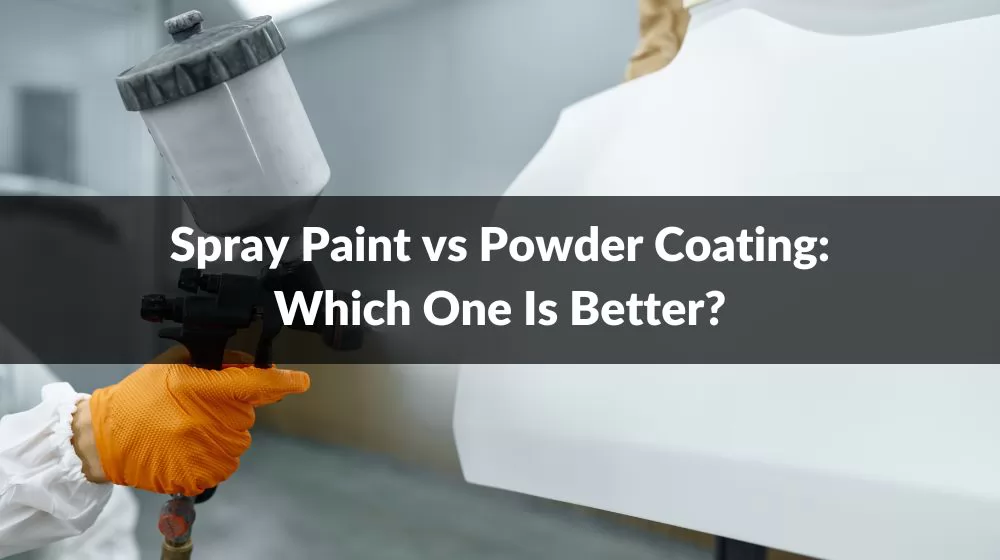
Table of contents:
When it comes to applying coatings to surfaces, two popular methods have emerged as top contenders: spray paint and powder coating. These techniques serve diverse industries, from automotive manufacturing to architectural design. But which one is better? The answer depends on various factors, including the specific application, desired finish, durability, and environmental considerations. In this article, we will delve into the key differences between spray paint and powder coating to help you make an informed decision based on your unique project requirements.
Liquid paint is a versatile coating method characterized by the fine dispersion of paint resin within a solvent or carrier. This solvent typically consists of Volatile Organic Compounds (VOCs), including substances like methyl ethyl ketone (MEK), turpentine, methylated spirits (a blend of methanol and ethanol), xylene, toluene, and acetone. This composition allows for the smooth application of paint to various surfaces.
The paint adheres to the surface primarily due to surface tension, which lends stability to the coating process. However, it's important to note that excessive application of liquid paint can lead to the formation of drips and sags, as the surface tension becomes less effective in holding the excess paint.
As the coating process continues, the solvent gradually evaporates from the painted surface. This evaporation is a crucial step, as it leads to the curing of the paint, resulting in a durable and solid painted finish. To expedite this curing process, parts are sometimes subjected to baking or heating.
In many cases, achieving the desired coating thickness requires the application of multiple coats of paint. This is done to increase the overall thickness and enhance the paint's performance and durability. Wet spray paints are typically applied with a thickness ranging from 0.0005 to 0.001 inches on each side of the surface, depending on the specific requirements of the application.
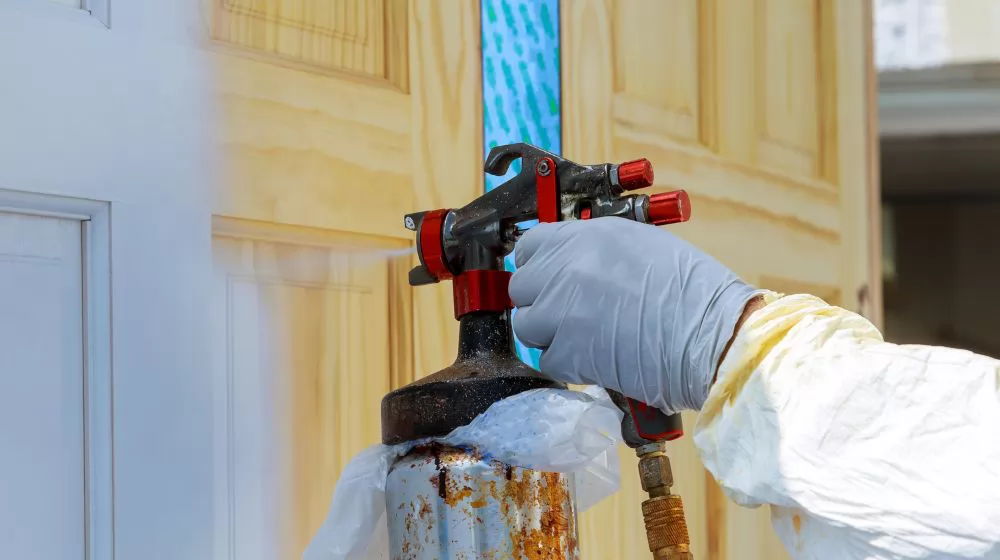
Advantages:
Uniform Coverage: Spray painting provides a smooth and even coat of paint, resulting in a uniform and attractive finish on various surfaces.
Speed and Efficiency: Spray painting is generally faster than traditional brush or roller painting methods, making it suitable for large surface areas or production work.
Accessibility: Spray guns can reach areas that are difficult to access with brushes or rollers, such as crevices, corners, and intricate details.
Reduced Paint Waste: Spray painting typically produces less paint waste compared to traditional methods because it applies paint more efficiently without excess dripping or runoff.
Fine Finish: Spray painting can achieve a finer and more professional-looking finish, especially when working with automotive, furniture, or high-end decorative applications.
Consistency: The automated nature of spray painting equipment ensures consistent paint application, minimizing variations in color and texture.
Versatility: Spray painting can be used with a wide range of paints, including primers, basecoats, clearcoats, and specialty coatings like metallic or pearl finishes.
Disadvantages:
Overspray: One of the primary drawbacks of spray painting is overspray, which can result in wasted paint and potential environmental concerns if not properly controlled.
Skill Requirement: Achieving a high-quality spray finish requires skill and experience, and improper technique can lead to uneven coats, streaks, or sags.
Masking and Ventilation: Proper masking of adjacent surfaces and adequate ventilation are essential to prevent overspray from contaminating surrounding areas and ensure a safe working environment.
Equipment Costs: Quality spray painting equipment can be expensive, which may not be cost-effective for occasional or small-scale projects.
Health and Safety Concerns: The use of spray paints often involves the inhalation of fumes and airborne particles, necessitating the use of protective gear and proper ventilation.
Environmental Impact: Many traditional spray paints contain Volatile Organic Compounds (VOCs) that can contribute to air pollution and may have environmental consequences.
Cleanup: Cleaning and maintaining spray painting equipment can be time-consuming and require specific solvents or cleaning agents.
Spray painting is extensively used in the automotive industry for tasks such as repainting vehicles, refinishing bumpers, and touching up minor imperfections.
It enables the application of basecoats, clearcoats, and custom finishes, achieving a professional and durable appearance.
Spray paint is a popular choice for refinishing and updating furniture pieces, giving them a fresh and modern look.
It is often used to change the color of wooden or metal furniture, providing a smooth and even finish.
In industrial settings, spray painting is employed to coat machinery, equipment, and structural components with protective and corrosion-resistant coatings.
It helps prolong the life of metal structures and prevents rust and deterioration.
Artists and creatives frequently use spray paint to produce vibrant and expressive artwork, murals, and graffiti.
The medium allows for intricate details and the blending of colors, enabling artists to create captivating visual pieces.
Spray paint is used for various home improvement projects, including painting walls, ceilings, and fences.
It offers a quicker and more even application compared to traditional brush or roller methods.
Woodworkers and cabinet makers often employ spray paint to finish and protect wooden surfaces, achieving a flawless and professional look.
Spray painting can also be used to add intricate designs or patterns to woodworking projects.
Enthusiasts and crafters use spray paint to transform everyday items into personalized decor pieces.
It's a versatile tool for creating custom home decor, holiday decorations, and DIY gifts.
Metal artists and sculptors utilize spray paint to add color and protection to metal sculptures and artworks.
The fine spray allows for precise detailing and intricate designs.
Spray paint is employed in model making, prototyping, and 3D printing to add realistic finishes to miniature models and prototypes.
It helps achieve lifelike appearances for architectural models, scale models, and hobbyist creations.
Spray painting is used to coat commercial and industrial equipment, machinery, and components to protect them from wear, weather, and corrosion.It helps maintain the functionality and appearance of various types of equipment.

The process of powder coating is both efficient and environmentally friendly. It starts with the application of dry powder paint, which is achieved by propelling the powder through an electrostatic gun using compressed air. This gun imparts a negative charge to the powder particles, while the metal components that will receive the coating remain grounded. This electrostatic attraction ensures that the powder adheres evenly and effectively to the surface of the parts being coated.
One significant advantage of powder coating is the ability to apply a thicker paint layer compared to traditional liquid painting methods. This thickness typically falls in the range of 0.002 to 0.006 inches on each side of the object. This substantial paint thickness contributes to the durability and longevity of the coating.
What makes powder coating particularly environmentally friendly is its solvent-free application. Unlike liquid paints, which require solvents to carry the resins and pigments to the surface, powder coating skips this step entirely. As a result, there are no volatile organic compounds (VOCs) emitted into the atmosphere during the application process, reducing air pollution and health hazards for workers.
Once the dry powder is evenly applied to the parts, the next crucial step is the curing process. This typically involves placing the coated parts in an oven or curing chamber where they are subjected to temperatures ranging from 300°F to 400°F (150°C to 200°C) for a duration of 10 to 30 minutes. During this curing phase, a remarkable transformation occurs.
The solid powder particles begin to melt, forming a liquid that adheres to the surface due to surface tension. As the curing process progresses, the melted powder cross-links and cures, reverting to a solid state. Initially, a solid skin forms on the outermost surface, gradually extending throughout the entire paint layer. Once the baking cycle is complete, the paint is fully cured, and the coated parts can be handled immediately after cooling.
This combination of efficient application, environmental friendliness, and the formation of a durable, fully cured finish makes powder coating a preferred choice for a wide range of industries and applications, from automotive and appliances to architectural components and more.
In the realm of powder coating, the selection of the appropriate resin system is a critical decision, as it significantly influences the performance and characteristics of the final coating. Several resin systems are available, each with its own unique properties, making it imperative to choose the one that best aligns with the specific application requirements.
One of the key considerations when choosing a resin system is UV stability. For applications exposed to sunlight or outdoor elements, such as architectural components or automotive parts, UV resistance is crucial. In this regard, urethane and polyester powder coatings stand out. They offer excellent UV stability, ensuring that the coating retains its color and integrity even when subjected to extended periods of sunlight. This UV resistance is particularly important in preventing the onset of chalking, a phenomenon where the coating deteriorates when repeatedly exposed to UV light, leading to faded colors and, eventually, complete coating failure.
However, each resin system has its unique strengths and weaknesses beyond UV stability. Here's a closer look:
Epoxy Resin System: Epoxy-based powder coatings are renowned for their exceptional chemical resistance. They are the top choice for applications where protection against corrosive substances is critical. Epoxy coatings form robust barriers that shield against chemicals, making them suitable for industrial equipment and surfaces exposed to harsh environments. However, their Achilles' heel is their limited UV stability, making them less ideal for outdoor or sun-exposed applications.
Urethane Resin System: Urethane powder coatings strike a balance between flexibility and UV stability. They are a preferred choice for external applications, offering the advantage of retaining their flexibility and color integrity even under prolonged exposure to sunlight. Urethane coatings are commonly used in the automotive industry and for outdoor equipment where both durability and UV resistance are essential. However, they may not provide the same level of chemical resistance as epoxy coatings.
Polyester Resin System: Polyester powder coatings offer an excellent all-around solution. They provide UV stability, good corrosion resistance, and hardness. This makes them suitable for a wide range of applications, including architectural components, outdoor furniture, and machinery. Their ability to resist UV degradation while providing adequate protection against corrosion and maintaining hardness makes them a versatile choice for many industries.
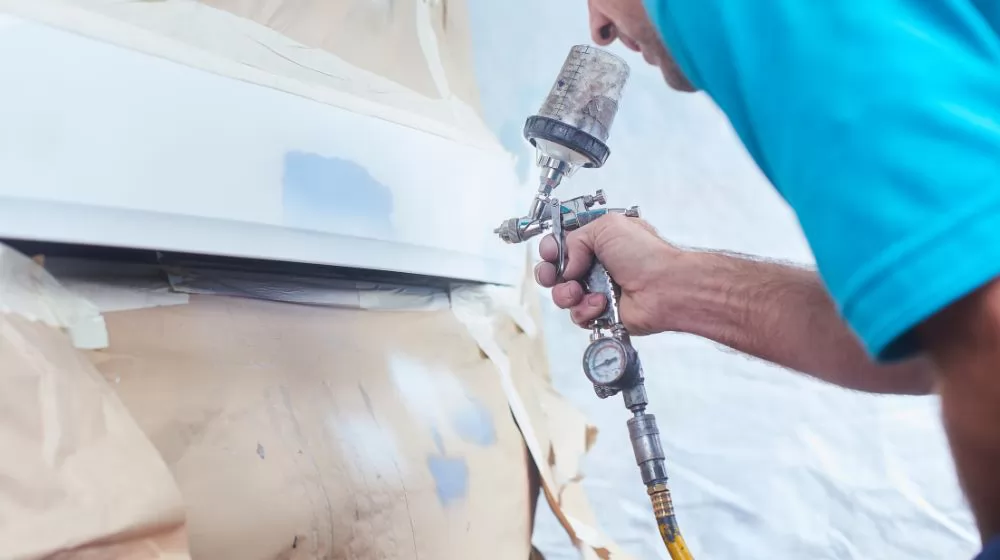
Durability: Powder coatings are highly durable and can withstand harsh environmental conditions, including UV exposure, extreme temperatures, and moisture. This durability results in a longer-lasting finish that resists chipping, cracking, fading, and corrosion.
Uniform Finish: Powder coating provides a consistently smooth and even finish, free from brush marks, drips, or streaks. This uniformity enhances the aesthetic appeal of coated products.
Environmental Friendliness: Powder coating is an environmentally friendly option because it generates little to no volatile organic compounds (VOCs) or hazardous air pollutants (HAPs). This reduces air pollution and makes it a safer choice for both workers and the environment.
Efficiency: Powder coating is an efficient process with minimal waste. Overspray can be collected and reused, reducing material costs. Additionally, it requires less drying time compared to wet painting, leading to increased productivity.
Cost-Effective: Over the long term, powder coating can be cost-effective due to reduced maintenance and longer coating life. The avoidance of solvents and the ability to reuse overspray contribute to cost savings.
Versatility: Powder coating is suitable for a wide range of materials, including metal, plastic, wood, and ceramics. It is used in various industries, from automotive and aerospace to appliances and architecture.
Color Options: Powder coatings offer an extensive range of color choices and finishes, including metallic, matte, glossy, and textured. Custom colors can be easily achieved.
Resistance: Powder coatings exhibit excellent resistance to chemicals, solvents, and impact, making them suitable for demanding applications.
Ease of Application: The electrostatic application process of powder coating ensures even coverage and minimal overspray. It is relatively easy to learn and execute.
Quick Curing: Powder coatings cure quickly when exposed to heat, reducing downtime and allowing for rapid production.
Health and Safety: The absence of toxic solvents and reduced exposure to hazardous materials makes powder coating a safer option for workers.
Regulatory Compliance: Powder coating often complies with environmental and safety regulations, reducing the need for costly compliance measures.
Versatility: Wet spray painting can be applied to a wide variety of surfaces, including metals, plastics, wood, ceramics, and composites. It is not limited to conductive substrates like powder coating.
Complex Shapes: Wet spray painting is more suitable for coating complex shapes, intricate details, and objects with irregular contours. It can reach and cover areas that powder coating may have difficulty accessing.
Thinner Coatings: Wet spray painting allows for the precise application of thin coatings, making it ideal for applications where maintaining tight tolerances or achieving specific layer thicknesses is essential.
Custom Color Matching: Achieving precise color matching and creating custom colors is often easier with wet spray painting. This makes it a preferred choice for industries where color accuracy is critical, such as automotive and graphic arts.
Quick Touch-Ups and Repairs: Wet spray painting permits easy touch-ups and spot repairs, which can be advantageous in situations where small imperfections need to be corrected without the need for full recoating.
Low Initial Equipment Costs: Setting up a wet spray painting operation typically involves lower initial equipment costs compared to establishing a powder coating system, which may require specialized curing ovens and booths.
Immediate Inspection: Coated surfaces can be inspected immediately after wet spray painting, allowing for real-time quality control and the ability to make adjustments as needed.
Complex Finishes: Wet spray painting allows for a wider range of finishes, including multi-color and gradient effects, which may be challenging to achieve with powder coating.
Thin Film Applications: Wet spray painting is well-suited for applications requiring extremely thin coatings, such as certain automotive finishes and artwork.
Ease of Recoating: If a change in color or finish is required, wet spray-painted surfaces can be more easily stripped and recoated than powder-coated ones.
No Cure Time: Wet spray-painted parts do not need to go through a curing process, allowing them to be handled and used immediately after painting.
Lower Energy Consumption: Wet spray painting typically consumes less energy compared to the curing process involved in powder coating.
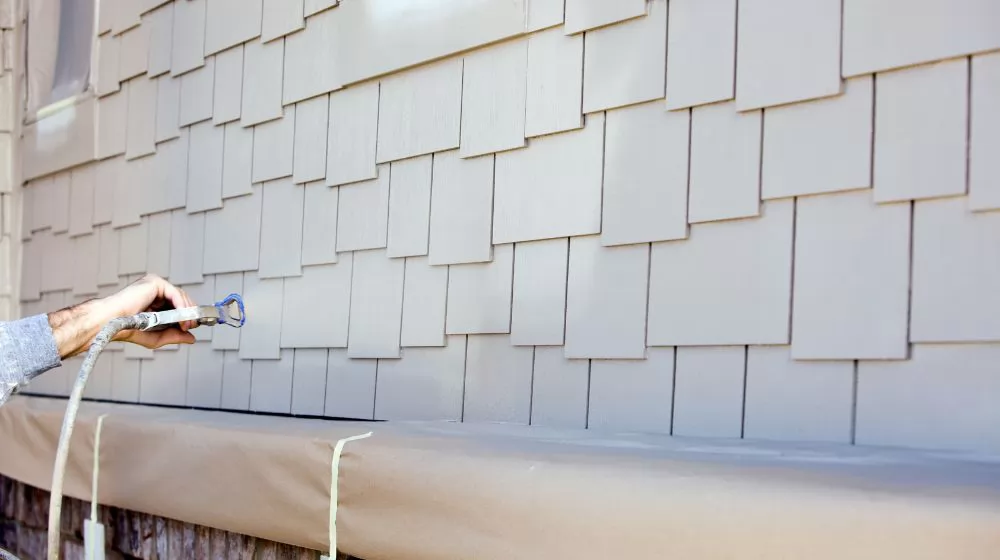
Both powder coating and wet spray painting are popular methods for applying protective finishes to surfaces, but they offer distinct advantages and considerations for different applications.
Powder coating is known for its exceptional durability, resulting from a coating that is 3-5 times thicker than wet paint systems. This thickness enhances the resistance of the finish to chipping, cracking, and fading, making it particularly well-suited for applications exposed to harsh conditions, such as outdoor equipment or architectural components. Moreover, powder coating acts as an effective corrosion barrier, safeguarding the underlying substrate from environmental factors. While the initial cost of powder coating may be higher, its longevity often proves more cost-effective over time due to reduced maintenance and recoating needs.
In contrast, wet spray painting has its own set of advantages, especially in terms of color flexibility and ease of touch-ups. Since wet paint does not require baking for curing, color matching and adjustments can be performed with precision. This makes it ideal for industries like automotive and graphic arts, where precise color matching is essential. Additionally, wet paint applications allow for the mixing of custom colors, offering versatility in achieving specific shades and finishes. Wet spray painting can also be readily applied to a wide range of substrates, including non-metallic materials like plastic or wood, making it suitable for diverse projects. Its ability to create thinner coatings may be preferred in situations where coating buildup must be minimized or an exceptionally smooth finish is required.
One noteworthy difference is that wet spray paint can be mixed to create custom colors, while powder coatings cannot be easily mixed to achieve different colors. If two different powder coat colors are mixed, the result will be a speckled combination of the two colors.
In conclusion, the choice between powder coating and wet spray painting hinges on the specific project requirements, substrate type, finish quality desired, and environmental considerations. Each method has its own strengths, and selecting the appropriate one depends on striking the right balance between these factors to achieve the best results for a particular application.
If you want to choose a reliable powder coating manufacturer, you need to consider many aspects.
Choosing the right powder coating manufacturer is a critical decision that can significantly impact the success of your project. To make an informed choice, begin by clearly defining your project requirements. Then, research potential manufacturers, considering factors such as their experience, certifications, and quality standards. Visiting their facility, reviewing their portfolio, and evaluating their equipment and technology can provide valuable insights.
Additionally, discuss capacity, lead times, and logistics to ensure they can meet your project's needs efficiently. Pricing should be competitive but not unrealistically low, as quality matters. Effective communication, responsive customer service, and references from past clients are essential.
Consider environmental sustainability practices if they align with your project goals. Lastly, think about the potential for a long-term partnership with the manufacturer. By following these steps and conducting thorough due diligence, you can select a powder coating manufacturer that best matches your project's specifications and sets the stage for a successful coating project.
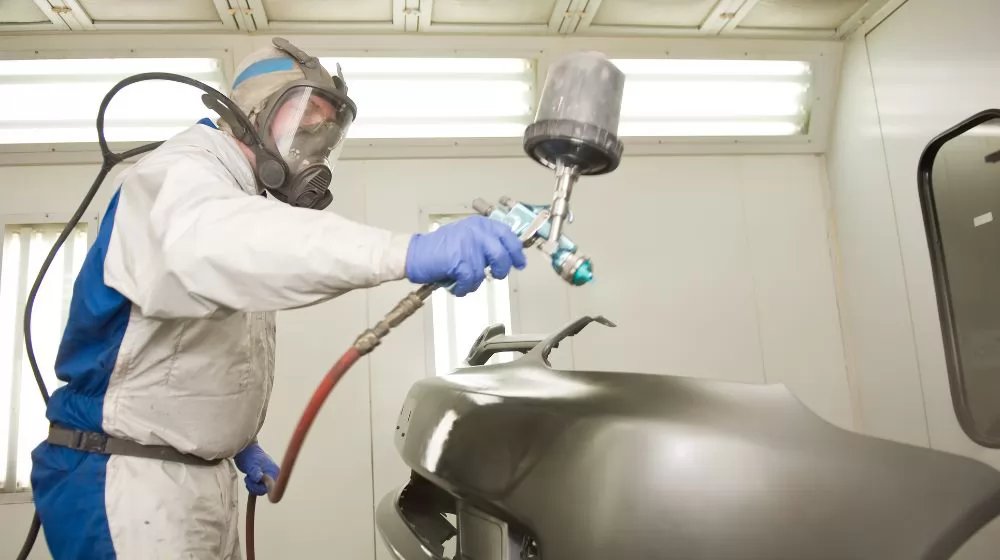
In the debate between spray paint and powder coating, there's no one-size-fits-all answer to the question of which is better. Each method has its own strengths and weaknesses, making them suitable for different applications.
Wintoly is an ISO 9001 and ISO 14001 certified company that can provide powder coating solutions and customized services. It has more than 20 years of experience. Please feel free to contact us if you need it!

 terrychen@wintoly.com
terrychen@wintoly.com
.png) 0086-757-85407388
0086-757-85407388
 6 Chaoyang Rd., National Demonstration Eco-industrialzone, Nanhai, Foshan,Guangdong,China
6 Chaoyang Rd., National Demonstration Eco-industrialzone, Nanhai, Foshan,Guangdong,China

.png)
